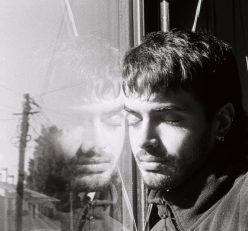Lindsay Wright is a composer. She started in bands, orchestras and musical groups. She studied Musical Technology and later got a place in London’s National Television and Film School. The Mystery of D. B. Cooper (HBO), Mudlarks, and Lines.

The mystery of D. B. Cooper is a feature documentary about the hijacking of a plane in 70s America by a man known as D. B. Cooper. The film does not identify a suspect – but instead takes a broader look at the obsession around the unsolved crime. A mix of re-enactment scenes, archive footage and interviews go between a few characters who believe they know the true identity of D. Cooper. Interviews the writer of a book on the mystery, the flight crew who were there when the plane was hijacked and the law enforcement officers who worked on the case. The director wanted a quirky, Fargo flavour to the score. Co-written and composed with Tim Atack.
Analysis:
- It starts with the stereotyped 70’s music (wah wah guitar, heist-movie-style flute etc.) and our more modern score.
- She started by mapping out points in the footage that I wanted to mark, for example, the shot of the plane after “get me there, let’s go.”
- Change of tone from panic and hurry to the flight crew talking about their experiences keeping calm.
- The Triplet motif was a recurring theme for Cooper throughout the film.
- Created a sense of threat with the ongoing throughout the cue coupled with the chord swells
- I used a fundamental change as the cue was quite long, and didn’t want it to feel like it was treading water.
He’s having some fun:
- This is the theme of Jerry Thomas’ character.
- He has walked the woods of Washington daily for the past 30 years and believes that Cooper could not have survived the plane jump.
- We went through a few different versions of this cue to nail what the director wanted.
- His determination and obsession were quite isolating, but he didn’t have any personal ties to the case like some other characters.
- Slightly off-kilter sound world from the other character – quirky but still a hint of that 70s vibe to suggest he’s stuck in the past.
MUDLARKS (short drama)
- Two young homeless girls – Ansel and Skylar (Mirren Mack and Naomi Preston-Low)
- Live in a tent by the Thames and work in shifts.
- Take the VO into consideration -try to have the guitar motifs in the spaces between dialogue.
- She went through many interactions with this cue but tried to capture the city’s vastness at night with the intimacy of Ansel’s monologue.
- There is a very long introduction under the voice-over – using the synths vocals to create interest in the repeated guitar motif.
- The original demo was just guitar, vocals and percussion.
- Used Dom’s original drum programming
LINES
- Written during the first lockdown of the covid 19 pandemic
- sonically influenced by artists such as Patrick Jonsson, Angus MacRae, Keaton Henson, Johann Johannson, Olafur Arnalds, Max Richter, Poppy Ackroyd
- Live string trio – violin performed by Natalia Tsupryk, cello by Derren Cullen and viola by me
- Mixed by her
- Mastered by Katie Tavini
- 3 instrumentals and one vocal track, planning a series of EP’s in this format.
themes
- Exile was about leaving London and finding myself in a new place.
- Where The Light Touches to keep moving, keep figuring things out and keep on going during uncertain times
- Through Glass was a response to people only being able to see loved ones in care homes and assisted living facilities through the window – protecting them by staying away.
- On Fire was inspired by the idea of doing so much for someone else that you lose the ability to care for yourself
- Not something that I make public with my artist tracks, but I like to have a focus and them when I’m Writing.
musical traits
- timbre
- constant motion
- cyclical layers
- texture
- rhythm
- harmony instrumentation
- structure
- slides
- bass
- space and depth
Lindsay’s approach to film doesn’t connect with my views on film, most probably because I’m used to a cinema that doesn’t rely on artefacts to prove its meanings. Many film directors argued about the usage of the soundtrack in a film and many criticised it when overused. I do believe that when sound is well-edited and conceptualised, the film doesn’t need music to prove itself to the spectator. However, I do recognise the amount of work put into these types of productions. In fact, it is rare the case where the sound team connects with the music department as they are separate on the workflow. About three weeks ago, I’ve finished editing the sound for a short film, and I decided to do 2 versions: one with only sound and another with the M+E. The director watched both versions and said “this film doesn’t work with music as much as I love how it works on the film”. I’m not trying to prove anyone, as this is not a matter of whether “true cinema” is or isn’t exempt from having music on it. However, it is not a matter of genre, but perhaps style and cinematic influences.
